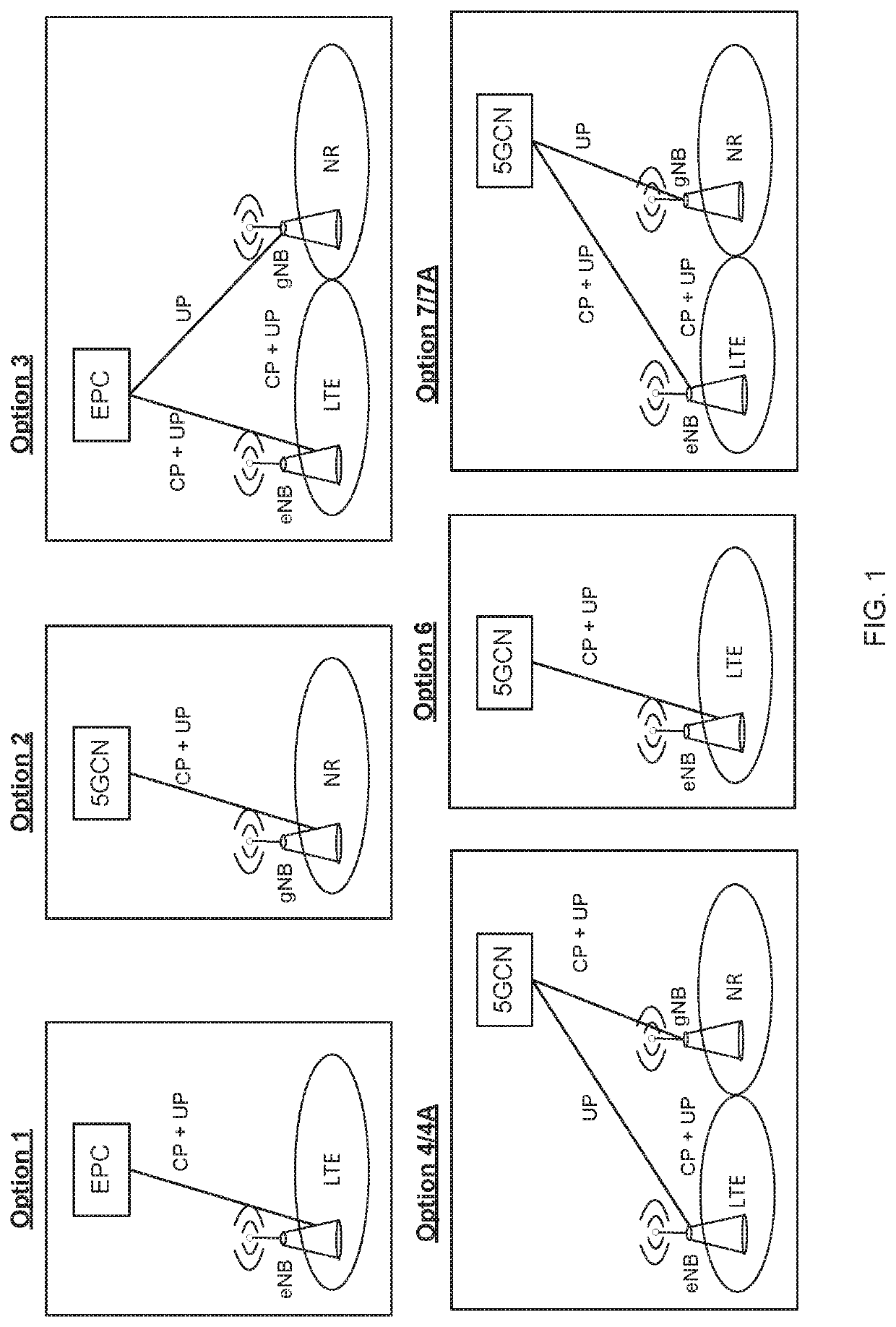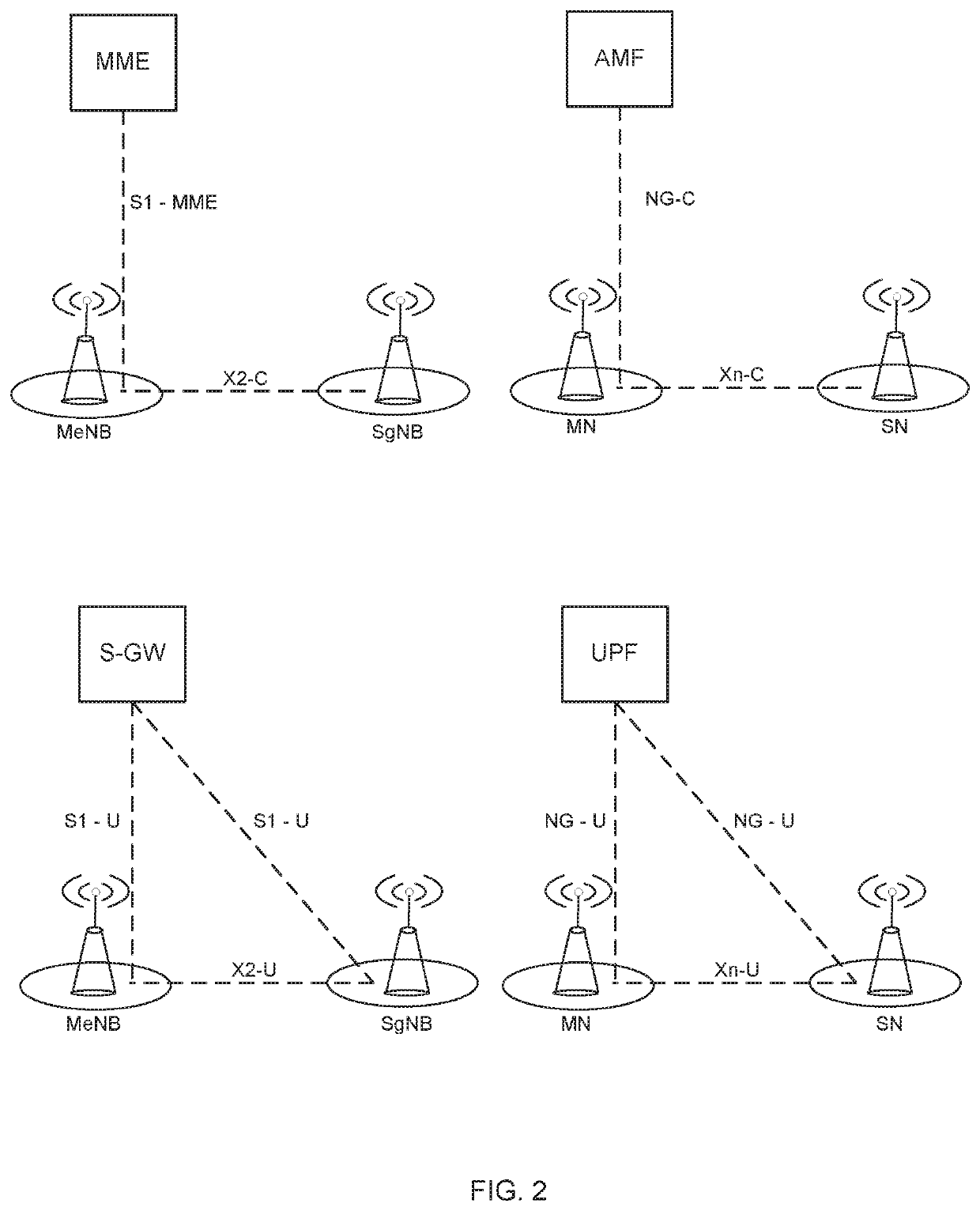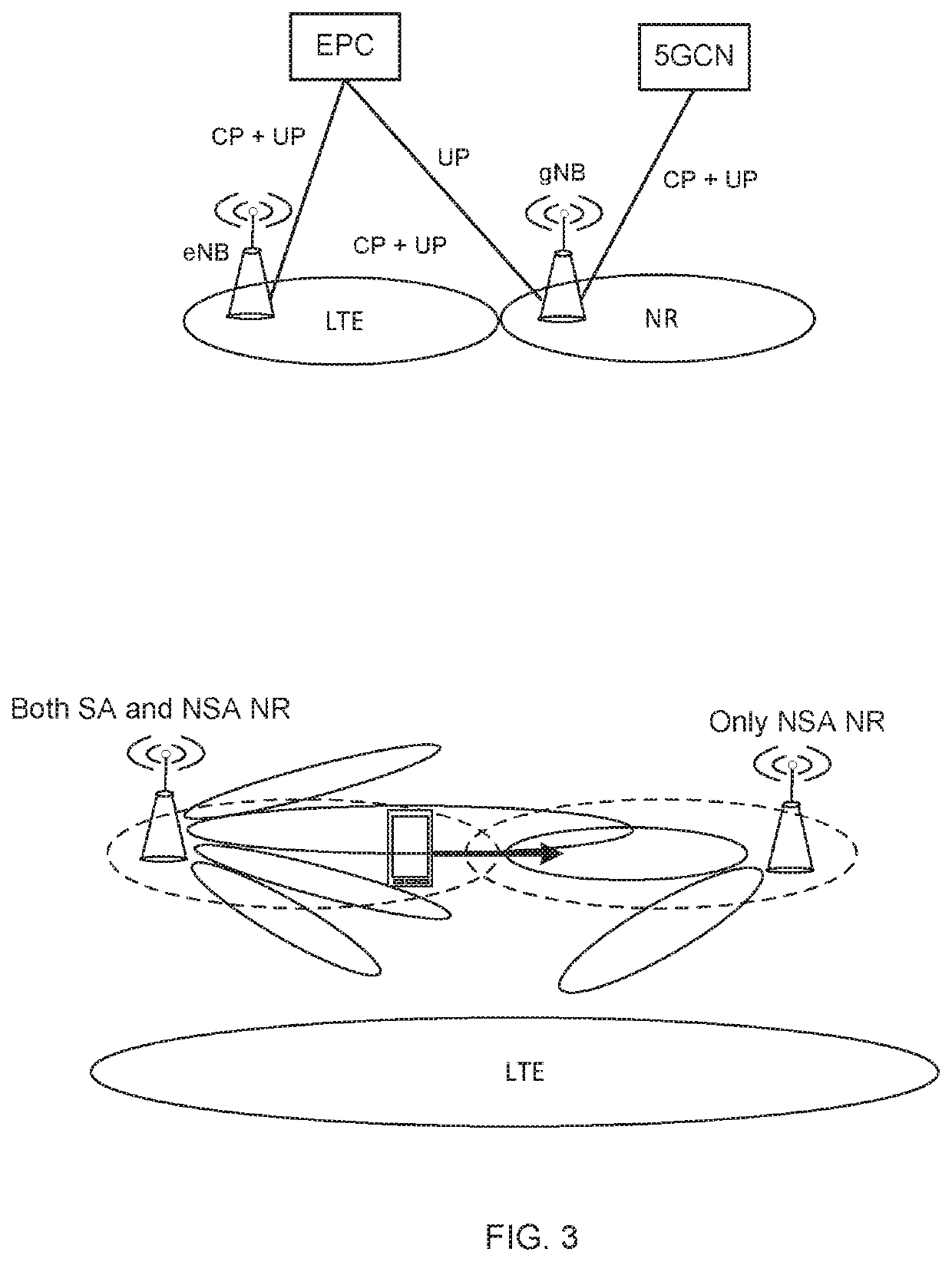Report nsa/sa nr indicator
a technology of nsa/sa and indicator, applied in the direction of electrical equipment, wireless communication, etc., can solve the problems of frequent error cases, 5g network deployment, and 5g network deployment methods
- Summary
- Abstract
- Description
- Claims
- Application Information
AI Technical Summary
Benefits of technology
Problems solved by technology
Method used
Image
Examples
embodiments
Group C Embodiments
[0257]C1. A wireless device comprising:
[0258]processing circuitry configured to perform any of the steps of any of the Group A embodiments; and
[0259]power supply circuitry configured to supply power to the wireless device.
[0260]C2. A base station comprising:
[0261]processing circuitry configured to perform any of the steps of any of the Group B embodiments;
[0262]power supply circuitry configured to supply power to the wireless device.
[0263]C3. A user equipment (UE) comprising:
[0264]an antenna configured to send and receive wireless signals;
[0265]radio front-end circuitry connected to the antenna and to processing circuitry, and configured to condition signals communicated between the antenna and the processing circuitry;
[0266]the processing circuitry being configured to perform any of the steps of any of the Group A embodiments;
[0267]an input interface connected to the processing circuitry and configured to allow input of information into the UE to be processed by ...
PUM
 Login to View More
Login to View More Abstract
Description
Claims
Application Information
 Login to View More
Login to View More - R&D
- Intellectual Property
- Life Sciences
- Materials
- Tech Scout
- Unparalleled Data Quality
- Higher Quality Content
- 60% Fewer Hallucinations
Browse by: Latest US Patents, China's latest patents, Technical Efficacy Thesaurus, Application Domain, Technology Topic, Popular Technical Reports.
© 2025 PatSnap. All rights reserved.Legal|Privacy policy|Modern Slavery Act Transparency Statement|Sitemap|About US| Contact US: help@patsnap.com



